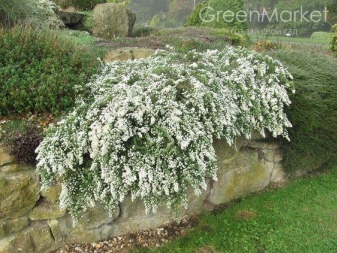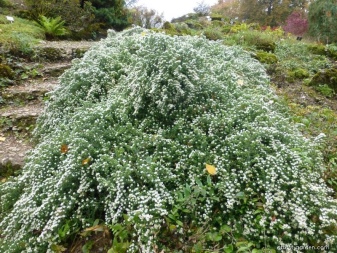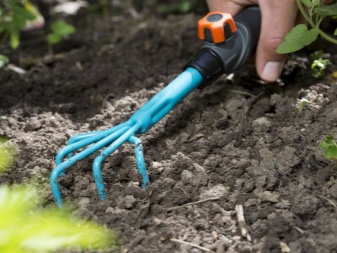Aster heather: description, planting, care and reproduction

Heather aster is rarely seen in the gardens of our compatriots, but in America and Canada, this perennial creeping culture is very popular. Gardeners appreciate it for its decorative appearance, unpretentiousness and delicate aroma. The culture pleases its owners with abundant flowering from September to November.

Peculiarities
In nature, heather ground cover aster is found in North America. The plant is a herbaceous perennial that blooms from September to November. The bush consists of elongated shoots 70-100 cm long, as a rule, they are branched, can be pubescent or glabrous. The stems are covered with leaves - from above they are small (1-1.5 cm), serrated, from below - long (up to 6 cm), dense, clawed. The leaf plates have a deep dark green color, are densely arranged, alternately - thanks to this, the plant looks fluffy.
Heather aster is resistant to frost, the plant can withstand prolonged cold weather, prolonged drought and frequent temperature changes. At the stage of flowering, it retains its decorative effect even when the temperature drops to -5 ... 6 degrees Celsius.


The creeping variety of asters grows very quickly in width, rapidly captures nearby areas, so gardeners should constantly limit it around the perimeter of plantings.


Aster grows like a thick ball, if you do not tie its branches, they will tilt down - this feature is often used by landscape designers to create spectacular compositions.
After flowering, the plant bears fruit with small flat seeds. However, due to the fact that the flowering of asters is later, the seeds rarely have time to ripen, therefore, the aster is propagated mainly by dividing the rhizome.


Varieties
Heather aster varieties are diverse.
- Pink Cloud. It is a spherical bushes, abundantly strewn with small baskets of inflorescences of white-pink color. The decorative appearance is preserved until the onset of cold weather.


- Snow flurry. The bushes are undersized, no more than 10 cm long. They are densely covered with white flowers, so they look like a snow-white blanket. Such plants are popular in the design of alpine slides and rockeries.


- Herbst Myrthe. A hybrid variety of creeping aster, the length of the shoots reaches 1 m. The flowers are light lilac, no more than 1 cm in size, the core is yellow, with a slight burgundy tint.

- Earl Koenig (Erlkonig). Spectacular aster with lavender flowers, yellow core. The size of the shoots reaches 1 m, blooms from early September to November.

- Blue star. Medium-sized shrub with a height of 60-70 cm. At the time of flowering, it looks like heather or undersized conifers, inflorescences are light blue.

- Lady in Black. This is a rather unusual aster, it is distinguished by dark green leaf plates, which in places turn into a dark purple color. Inflorescences are milky white with a pinkish brown heart.

How to propagate?
Reproduction of heather asters can be done in several ways.
Seeds
Quite a popular way of breeding asters. In this case, the seeds are laid in the ground in early spring. The soil must first be loosened, mixed with peat, rotted compost and river sand.Deepen the seed by 1-1.5 cm and spray it with a drip method - otherwise the seeds will float away with the water.
From above, the substrate should certainly be covered with mulch, it is best to use compost, it will protect the soil from drying out, and at the same time saturate with micronutrients.


As the seedling grows, it is necessary from time to time to gently loosen the ground, remove weeds along with the roots. The very first shoots can be seen in 7-10 days. After the appearance of the first full-fledged leaves, they need to be dived and planted in a permanent place.


If you wish, you can plant seeds in the fall in slightly frozen soil with mandatory deepening. On top of the sowing, the soil should be covered with compost mulch. The first shoots will appear in the spring, and flowering can only be achieved next year.
Seedling
You can breed heather aster through seedlings. To do this, before planting, the seeds are soaked in a moistened napkin and planted in a prepared container to a depth of 0.5 cm. The sowing is covered with a film and moved to a warm, bright place. From time to time you need to remove the film to air the greenhouse.
The sprouts appear in about a week, immediately after that the film must be removed. As soon as a pair of true leaves appears, the seedlings dive into separate containers.

After 2 weeks, the seedlings should be fed - for this, complex preparations or ammonium nitrate (1 g / l) are used, and after another 2 weeks they are treated with superphosphate (1.5 g / l).

Rhizome division
In this case, the plant is dug up together with the root system and carefully divided into parts, after which each is planted in separate holes, sprinkled with a nutritious substrate and watered.
How to plant?
Choosing a place to grow asters is very important. This crop prefers the sun, so it is best to choose open, non-shaded areas of land for cultivation.
Aster grows best on sandy or clay soil. Keep in mind - the plant does not tolerate excess moisture, therefore, with a high level of groundwater occurrence, you simply will not be able to grow a full-fledged healthy plant with high decorative characteristics.

Within 4-5 years after planting, the plant should not be moved to other places, but after a while it is advisable to transplant it - this will prevent the development of cultural diseases. It is best to allocate areas for aster where marigolds or calendula used to grow. But the land, which used to be gladioli and tulips, is not suitable for asters, since these crops create conditions favorable for the development of Fusarium.
In order to achieve the early flowering of asters, it is best to plant its open ground in the form of seedlings, usually planting is carried out in the first ten days of May, when the threat of recurrent frosts has passed.
Before planting, the land must be watered with water, the bushes must be planted at a distance of 20-25 cm from each other, while leaving about 50 cm between the rows. It is not necessary to water the aster immediately after planting, since it is planted in a pre-moistened ground, but after a couple of days you can do the first watering.


How to care?
Heather aster is a rather unpretentious plant. The rules for caring for him are quite simple.
- Aster should be watered regularly.
- The plant needs nutritious feeding every month. The culture responds best to minerals and organics.
- To increase the air permeability of the land, the area around the bush should be loosened in a timely manner and weeds should be removed along with the roots.
- All dried inflorescences and leaves must be removed immediately so that the aster does not waste its vitality on them.
- The culture does not need shelter for the winter. To prepare for the cold weather, it will be quite enough to cut off the ground part, leaving small columns 15-25 cm long.


Diseases
Heather aster often encounters powdery mildew.Especially often, pathology occurs with dense planting, as well as on impoverished soil. To revive the culture, you should use the drug "Topaz".
If the leaf blades are infected with fungal spores, your pet is most likely experiencing annular spotting. The drugs "Fundazol" and Bordeaux liquid are highly effective in the fight against the disease.

With excessive waterlogging, as well as with an excess of nitrogen-containing fertilizers, heather aster encounters gray rot. Usually copper sulfate helps in this case.
In addition to diseases, climbing aster often becomes a victim of an attack of parasitic insects.
When a spider mite is affected, experienced gardeners recommend using acaricides; onion husks are very effective.

When nematodes are active, whitish tubercles are noticeable on aster leaf plates. All damaged fragments must be removed; in case of mass defeat, the plant must be uprooted and burned.
Obviously, the heather-like aster does not require special care, but nevertheless, for a lush and long-lasting flowering, some care rules still need to be observed.

Use in landscape design
Heather aster is often used in gardening a garden plot. It is very popular for its ground cover characteristics. Most often it is used to decorate rockeries and alpine slides, as well as for landscaping open park areas and flower beds, for framing garden grasses. Due to its high survival rate in partial shade, aster is widely demanded for making beautiful combinations with conifers.
Low-growing heather aster is very often combined with iberis and carnation, and taller ones - with rudbeckia and decorative yarrow.

This culture looks especially impressive in single plantings, when its bushes are formed in the form of a cone or a ball.
Heather aster is a crop with high decorative characteristics. Having planted it on your site, you do not have to devote too much time to this flower, but at the same time it will delight you with its beauty and delicate scent for many years.

For an overview of the heather aster, see the video below.







































































































The comment was sent successfully.